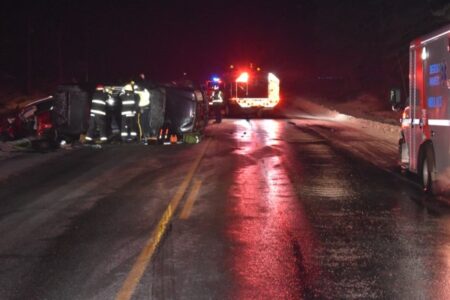New collaborative report on First Nations child and youth injuries
VICTORIA, December 8, 2020 – Representative for Children and Youth Jennifer Charlesworth today released a report examining critical injuries and deaths of First Nations children and youth Illuminating Service Experience: A Descriptive Analysis of Injury and Death Reports for First Nations Children and Youth in B.C., 2015 to 2017. The report is the result of an aggregate review of injury and death data and is designed to be directly useful to the communities affected.
“We are acutely aware that, broadly speaking, much research since colonization that involves First Nations, Métis, Inuit and urban Indigenous peoples has not served their communities,” said Charlesworth. “It’s time for that to change. With this report, we are aiming to disrupt that trajectory and work in respectful collaboration with First Nations communities to produce research that they have said they need and that will be useful to them as they prepare to resume jurisdiction over their own child welfare systems.”
This is the second report produced by the Representative’s office that intentionally aims to work collaboratively with, and in service of, First Nations, Métis, Inuit and Urban Indigenous communities. The sister report to this one – Invisible Children: A descriptive analysis of injury and death reports for Métis children and youth in B.C., 2015 to 2017 – was released in July 2020.
This report focuses on injuries reported for children and youth identified as First Nations by the Ministry of Children and Family Development (MCFD), and uses injuries and deaths reported for non-Indigenous children and youth as a comparison group.
The Representative and her staff met with First Nations leaders, community members and service providers to share the data and hear their ideas for analysis. Among others, the Representative met with the Delegated Aboriginal Agencies Directors Forum, the First Nations Leadership Council representing the First Nations Summit, the Union of B.C. Indian Chiefs and the B.C. Assembly of First Nations, and presented data to the All Chiefs meeting in 2019.
Directors Forum Chair Mary Teegee said, “The Directors Forum is saddened to hear the troubling statistics of deaths and critical injuries of First Nations children and youth. Reports such as this must drive systems responsible for the funding and policies to support and care for the most vulnerable and at-risk First Nations children and youth to do better to support the transformation of Indigenous child and family services. It is time to broaden our inquiry to become curious about the bright spots where Indigenous child and family services are making a positive difference for First Nations children. Learning from the experience of those providing Indigenous child and family services is a key step in the pathway to improved outcomes for Indigenous children and youth.”
Among the findings, the data shows the majority of injuries reported for First Nations children and youth were for those in the care of the Ministry of Children and Family Development or a Delegated Aboriginal Authority. The highest number of injuries were reported for First Nations children in permanent care under a Continuing Custody Order (CCO). There was a striking difference in the number of injuries reported for First Nations and non-Indigenous children who were CCO. More than two times the number of injuries were reported for First Nations children and youth who were CCO than non-Indigenous children and youth who were CCO.
Other findings included:
• one-third of deaths reported for First Nations children and youth were unexpected (due to accident, suicide or homicide)
• most injuries reported for First Nations youth were for female-identifying youth • injuries reported for First Nations youth were most commonly reported for those placed in foster homes
• sexual assaults and suicide attempts were the most commonly reported injuries for both First Nations children and youth and non-Indigenous children and youth
• physical assault injuries and caregiver mistreatment were reported more commonly for First Nations children and youth than non-Indigenous children and youth.
The data reviewed also raises other questions, for example, is there a difference in the number and type of injuries reported for First Nations children and youth served by MCFD versus DAAs? Is there a difference in the number and type of injuries reported for those children and youth who have active family or community involvement in their lives and those who do not? What is working well to protect First Nations children and youth from harms?
“A primary goal of this report is to provide First Nations leadership and service providers with more information to inform and support their work on resumption of child welfare jurisdiction,” said Charlesworth. “And in the work of this Office going forward, in addition to consulting with those who have the most intimate knowledge of what is best for their own children, youth and families – the communities, families, services providers, leadership groups and young people themselves – we will also focus on bright spots to examine what is working and what should be built upon in future.”
“My hope is that the data presented in this report and the Invisible Children report will support the ongoing call for funding for services and supports that are sustainable, predictable and necessary to address the substantive inequities that exist for First Nations, Metis and Inuit children, youth and their families.”
























Comments